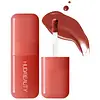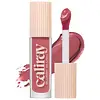What's inside
What's inside
 Key Ingredients
Key Ingredients

 Benefits
Benefits

 Concerns
Concerns

 Ingredients Side-by-side
Ingredients Side-by-side

Hydrogenated Polyisobutene
EmollientHydrogenated Poly(C6-14 Olefin)
EmollientMica
Cosmetic ColorantDiisostearyl Malate
EmollientOctyldodecanol
EmollientCalcium Titanium Borosilicate
AbrasiveTrimethylsiloxysilicate
EmollientIsododecane
EmollientHydrogenated Styrene/Isoprene Copolymer
Silica
AbrasiveSynthetic Fluorphlogopite
Disteardimonium Hectorite
StabilisingDextrin Palmitate
EmulsifyingSorbitan Sesquioleate
EmulsifyingPhenoxyethanol
PreservativePropylene Carbonate
SolventParfum
MaskingTin Oxide
AbrasiveTriethoxycaprylylsilane
Aluminum Hydroxide
EmollientPolyhydroxystearic Acid
EmulsifyingPentaerythrityl Tetra-Di-T-Butyl Hydroxyhydrocinnamate
AntioxidantTocopherol
AntioxidantTitanium Dioxide
Cosmetic ColorantCI 15985
Cosmetic ColorantIron Oxides
CI 15850
Cosmetic ColorantHydrogenated Polyisobutene, Hydrogenated Poly(C6-14 Olefin), Mica, Diisostearyl Malate, Octyldodecanol, Calcium Titanium Borosilicate, Trimethylsiloxysilicate, Isododecane, Hydrogenated Styrene/Isoprene Copolymer, Silica, Synthetic Fluorphlogopite, Disteardimonium Hectorite, Dextrin Palmitate, Sorbitan Sesquioleate, Phenoxyethanol, Propylene Carbonate, Parfum, Tin Oxide, Triethoxycaprylylsilane, Aluminum Hydroxide, Polyhydroxystearic Acid, Pentaerythrityl Tetra-Di-T-Butyl Hydroxyhydrocinnamate, Tocopherol, Titanium Dioxide, CI 15985, Iron Oxides, CI 15850
Isododecane
EmollientTitanium Dioxide
Cosmetic ColorantCI 77891
Cosmetic ColorantSynthetic Fluorphlogopite
Mica
Cosmetic ColorantSilica
AbrasiveTrimethylsiloxysilicate
EmollientEthylene/Propylene/Styrene Copolymer
Disteardimonium Hectorite
StabilisingOctyldodecanol
EmollientIron Oxides
CI 77491
Cosmetic ColorantButylene/Ethylene/Styrene Copolymer
Silica Silylate
EmollientCaprylyl Glycol
Emollient1,2-Hexanediol
Skin ConditioningWater
Skin ConditioningTocopheryl Acetate
AntioxidantCI 15850
Cosmetic ColorantPentaerythrityl Tetra-Di-T-Butyl Hydroxyhydrocinnamate
AntioxidantNiacinamide
SmoothingKaolin
AbrasiveGlycerin
HumectantCopper Tripeptide-1
Skin ConditioningAlbizia Julibrissin Bark Extract
MaskingSodium Benzoate
MaskingDarutoside
Skin ConditioningIsododecane, Titanium Dioxide, CI 77891, Synthetic Fluorphlogopite, Mica, Silica, Trimethylsiloxysilicate, Ethylene/Propylene/Styrene Copolymer, Disteardimonium Hectorite, Octyldodecanol, Iron Oxides, CI 77491, Butylene/Ethylene/Styrene Copolymer, Silica Silylate, Caprylyl Glycol, 1,2-Hexanediol, Water, Tocopheryl Acetate, CI 15850, Pentaerythrityl Tetra-Di-T-Butyl Hydroxyhydrocinnamate, Niacinamide, Kaolin, Glycerin, Copper Tripeptide-1, Albizia Julibrissin Bark Extract, Sodium Benzoate, Darutoside
 Reviews
Reviews

Ingredients Explained
These ingredients are found in both products.
Ingredients higher up in an ingredient list are typically present in a larger amount.
Ci 15850 is the pigment color red. It is an azo dye and created synthetically.
Azo dyes need to be thoroughly purified before use. This allows them to be more stable and longer-lasting.
This ingredient is common in foundations, lipsticks, and blushes. This color is described as brown/orangey red.
It has many secondary names such as Red 6 and Red 7. According to a manufacturer, Red 6 usually contains aluminum.
Learn more about CI 15850Disteardimonium Hectorite comes from the clay mineral named hectorite. It is used to add thickness to a product.
It can also help stabilize a product by helping to disperse other ingredients.
Hectorite is a rare, white clay mineral.
Learn more about Disteardimonium HectoriteIsododecane is a fragrance, emollient, and solvent.
As an emollient, it helps your skin stay soft and hydrated. Emollients help trap moisture into your skin.
Isododecane's role as a solvent makes it a great texture enhancer. It spreads smoothly on skin and does not leave a sticky feeling behind. Isododecane also helps prevent color transfer in makeup products.
Isododecane is not absorbed into skin.
Learn more about IsododecaneMica is a naturally occurring mineral used to add shimmer and color in cosmetics. It can also help improve the texture of a product or give it an opaque, white/silver color.
Serecite is the name for very fine but ragged grains of mica.
This ingredient is often coated with metal oxides like titanium dioxide. Trace amounts of heavy metals may be found in mica, but these metals are not harmful in our personal products.
Mica has been used since prehistoric times throughout the world. Ancient Egyptian, Indian, Greek, Roman, Aztec, and Chinese civilizations have used mica.
Learn more about MicaOctyldodecanol is a fatty alcohol. It is primarily used to enhance the texture of products.
As an emulsifier, Octyldodecanol helps prevent the oils and waters from separating. It also prevents ingredients from creating foam when shaken.
Octyldodecanol is created by reducing fatty acid to an alcohol.
Due to its high molecular weight, it does not get absorbed into the skin.
Learn more about OctyldodecanolPentaerythrityl Tetra-Di-T-Butyl Hydroxyhydrocinnamate (long name, huh?) is a synthetic antioxidant.
It is used to help stabilize other antioxidants or prevent the color from changing in a product.
As an antioxidant, it helps fight free-radical molecules. Free-radical molecules are capable of damaging our cells and other genetic material. Thus, antioxidants may reduce the signs of aging.
This ingredient is oil-soluble.
Learn more about Pentaerythrityl Tetra-Di-T-Butyl HydroxyhydrocinnamateSilica, also known as silicon dioxide, is a naturally occurring mineral. It is used as a fine, spherical, and porous powder in cosmetics.
Though it has exfoliant properties, the function of silica varies depending on the product.
The unique structure of silica enhances the spreadability and adds smoothness, making it a great texture enhancer.
It is also used as an active carrier, emulsifier, and mattifier due to its ability to absorb excess oil.
In some products, tiny microneedles called spicules are made from silica or hydrolyzed sponge. When you rub them in, they lightly polish away dead skin layers and enhance the penetration of active ingredients.
Learn more about SilicaSynthetic Fluorphlogopite is the synthethic version of mica. It consists of fluorine, aluminum and silicate.
Synthetic Fluorphlogopite is used to add volume to products.
It is considered non-irritating on the skin.
Learn more about Synthetic FluorphlogopiteTitanium dioxide is a mineral UV filter widely used in sunscreens and cosmetics.
It is one of only two UV filters officially classified as “mineral” by regulatory agencies, the other being zinc oxide.
Titanium dioxide provides broad-spectrum protection mostly in the UVB and UVAII range, with some protection in the UVAI range.
While its UVA protection isn’t as strong as zinc oxide’s, the difference is minor.
A common myth is that mineral UV filters reflect UV light. However, modern research shows titanium dioxide absorbs UV radiation like chemical filters (~95% absorption & 5% reflection).
Thanks to its non-irritating nature, titanium dioxide is suitable for sensitive, acne-prone, or redness-prone skin. It is unlikely to cause "eye sting" like other sunscreen ingredients.
A major drawback of this ingredient is its white cast and thick texture. This is why mineral sunscreens often leave a white cast and are less cosmetically elegant than chemical/hybrid sunscreens.
To improve white cast and spreadability, micronized or nano-sized titanium dioxide is often used.
There are ongoing concerns surrounding nano-titanium oxide's impact on marine ecosystems.
There is no conclusive evidence that any form of titanium oxide (or any other sunscreen ingredients) will cause harm to marine ecosystems or coral reefs. The science is still developing but many consumers are keeping a close eye on this issue.
Please note, many destinations have reef-safety sunscreen rules. For instance, the U.S. Virgin Islands advises all visitors to use non-nano mineral sunscreens.
Nano mineral sunscreens once raised safety concerns about absorption into skin.
Extensive research has shown that they do not penetrate healthy or damaged skin; they remain safely on the surface and the top layer of dead skin (stratum corneum).
You'll likely find titanium dioxide bundled with alumina, silica, or dimethicone. These ingredients help make titanium dioxide highly photostable; this prevents it from interacting with other formula components under UV light.
Learn more about Titanium DioxideThis silicone is an emollient. Emollients create a thin film on the skin to prevent moisture from escaping.
It is not soluble in water and helps increase water-resistance in products.
According to a manufacturer, it can blend seamlessly with silicone oils, such as Cyclopentasiloxane.
Learn more about TrimethylsiloxysilicateThis ingredient is a combination of red, black, and yellow iron oxide pigments. This combination of colors is usually found in foundation, because it results in a "skin" color.